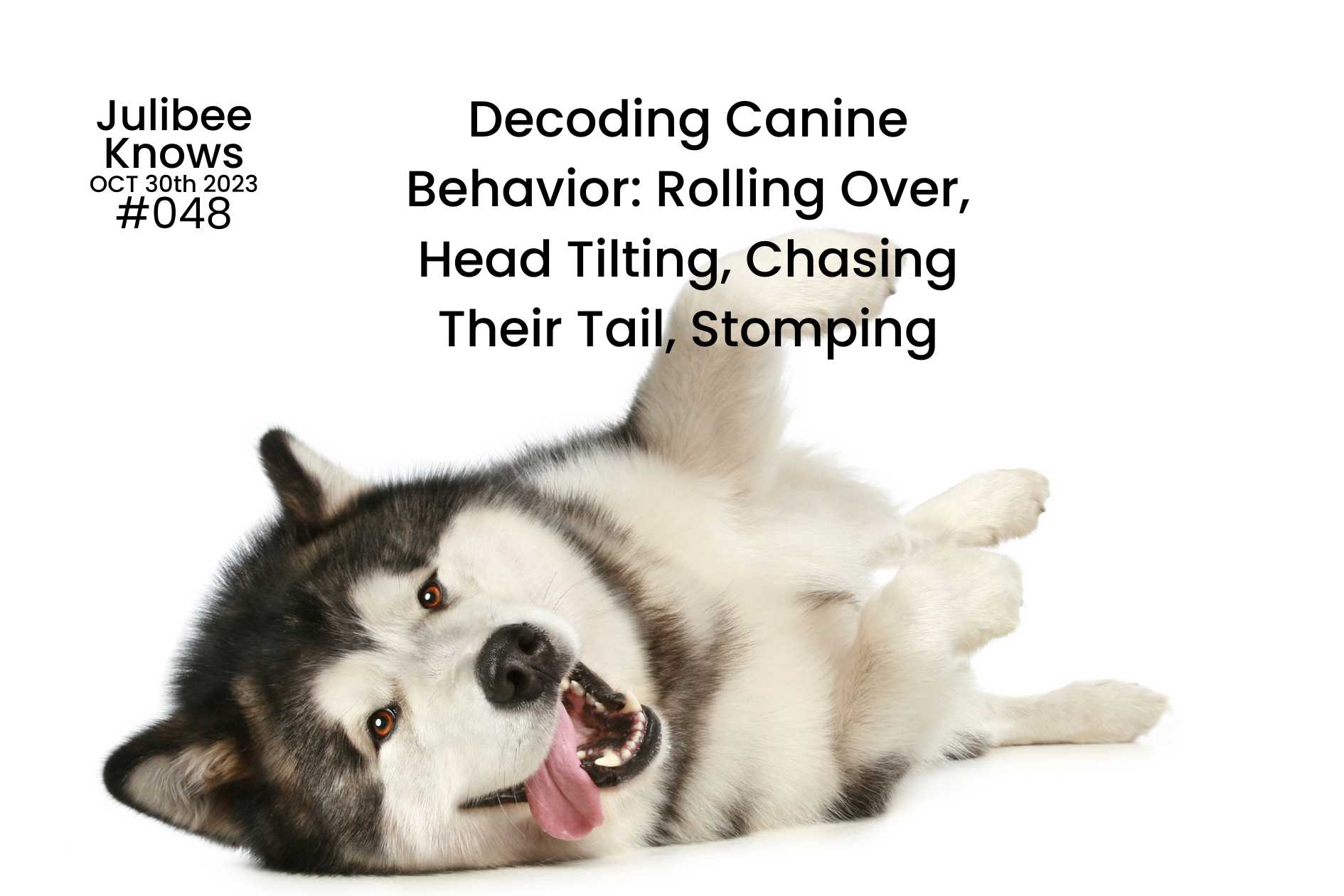
Decoding Canine Behavior: Rolling Over, Head Tilting, Chasing Their Tail, Stomping
Explore common dog behaviors like rolling over, tilting their heads, tail-chasing, and foot-stomping. Understand the various reasons behind these actions and how to respond appropriately. Gain insights into your dog's world.
Inside this Article:
1. Rolling Over
Rolling over is a common behavior in dogs, often occurring during interactions with humans and other dogs. However, the meaning behind this action can vary depending on the context. In social situations, a dog might voluntarily lie down and roll over as a friendly gesture. On the other hand, when facing a rapidly approaching dog, rolling over can signify, "I'm not ready, please wait." It's crucial to remember that interpreting dog behavior isn't solely about individual actions, expressions, or postures. Instead, it requires considering the broader context, the process, and mechanisms involved. Feel free to share your insights on what you think rolling over means.
2. Head Tilting
Let's now explore another common behavior: the adorable head tilt. This is a proactive and kind communication from your dog. Visually, when a dog wishes to focus on the current situation and deliberately abandons its balance to appear vulnerable, it tilts its head. Another reason relates to hearing. Dogs often exhibit head tilts in response to sounds like whistles or unusual bird calls. This action serves as a way for dogs to maintain their balance while capturing auditory information.
3. Chasing Their Tail
Many dog owners wonder, "Why does my dog keep chasing its tail?" As a general rule, we should first rule out physiological causes for this behavior. Itchy skin near the tail, parasitic infestations, or anal area issues can make dogs compulsively turn and bite their tails. This can lead to tail injury and inflammation, along with a reluctance to be touched by humans. It's important to note that taut muscles around the waist and hips can also lead to tail chasing.
The second reason behind tail chasing may be self-soothing. When a dog's social needs aren't met, suddenly seeing their own wagging tail may instinctively stimulate them to chase it, providing a sense of mental satisfaction. This often involves chasing the tail without biting it. However, if the dog's life remains monotonous, this behavior might intensify, eventually leading to tail-biting to meet their emotional needs.
The third reason is often related to human reinforcement or unintentional training. When dog owners who lack knowledge of canine behavior see their dogs chasing their tails for the first time, they might find it amusing and encourage the behavior. Correctly interpreting a dog's behavior and responding appropriately is essential to prevent reinforcing unwanted behaviors.

4. Stomping
Foot stomping is a behavior commonly observed when a dog is waiting to go out, playing fetch with humans, or anticipating a meal. It involves the dog lifting its front legs together or alternating between them in a dance-like foot-stomping action. This behavior reflects a dog's internal conflict, such as the desire to go out versus following door etiquette, wanting to reach a ball versus predicting its movement, or desiring food versus observing feeding etiquette. These internal conflicts leave dogs in a state of behavioral command conflict, making it difficult for them to decide. It also keeps them ready for action, resulting in changes in body weight distribution and foot-stomping behavior, akin to how we move during a game of table tennis, always preparing for movement in various directions.


243 comments
mwJtkLQMIqY
baJOqTGMsUe
VUlJFvjq
msDOxkGQ
mZvkIzrYdbHon
CXNwSEmrvZjF